Houseplant experts guarantee these 5 steps will revive a dying calathea – plus tips on how to keep it thriving going forward
A little TLC and patience can put these tricky houseplants on the road to recovery

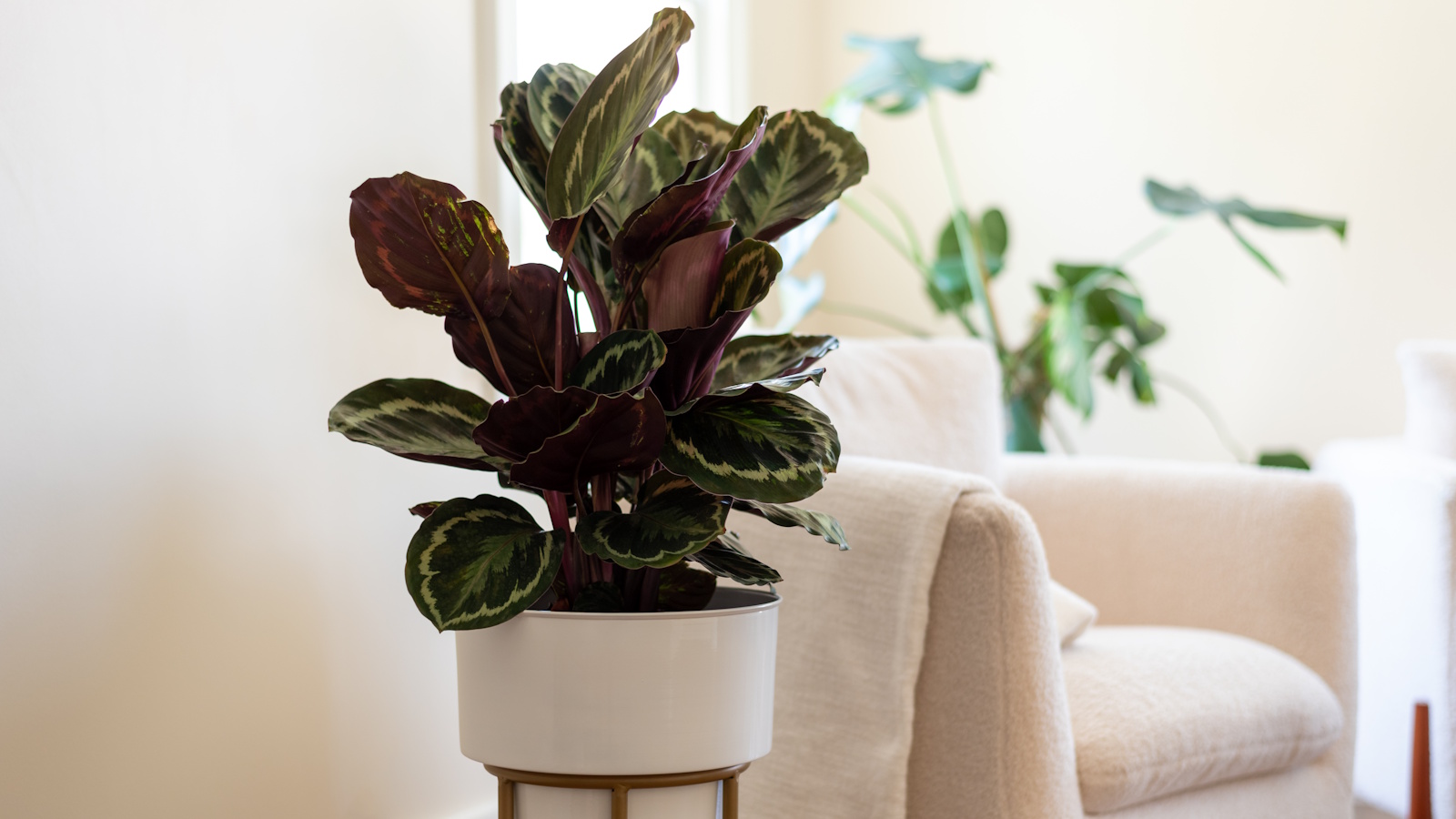
Calatheas (now known as Goeppertia) are some of the most beautiful houseplants you can grow. I've cared for a few calatheas in my houseplant collection and can fairly say they're also some of the trickiest houseplants. Some are easier to look after than others, but it's not uncommon for plant parents to stumble into a range of problems with calatheas.
This is because calathea care is very specific and the smallest or errors can lead to their demise. From incorrect watering to leaving your calathea in the line of direct sun, there are a few common calathea mistakes that can leave these tropical beauties looking worse for wear. But don't fret, it is possible to revive a dying calathea.
Whether your calathea has crisping foliage or is dropping leaves, houseplant experts say there are a few things you can do to save it. Of course, it's important to note that success in reviving a calathea depends on how far gone the problem is. Having said that, it's worth trying these steps to bring it back to good health.
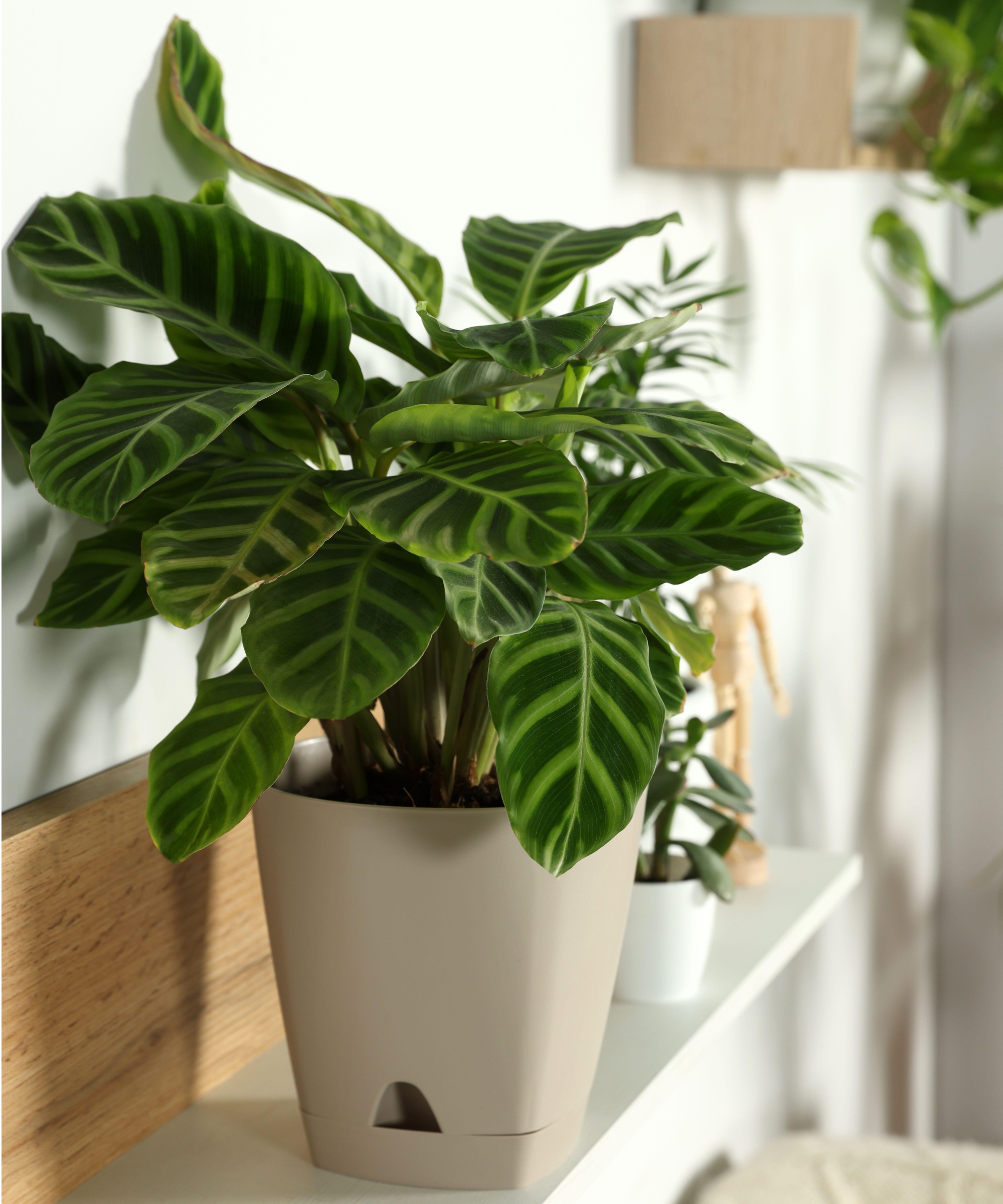
5 steps to revive a dying calathea
No matter which calathea variety you grow at home, all of the below steps can be applied. It's important to first identify what is causing the problem for your plant, whether its incorrect moisture levels, too much sun, or something like a common houseplant pest.
The cause may mean you need to alter the below steps slightly, such as needing to get rid of thrips if your calathea has them.
1. Prune away damaged foliage
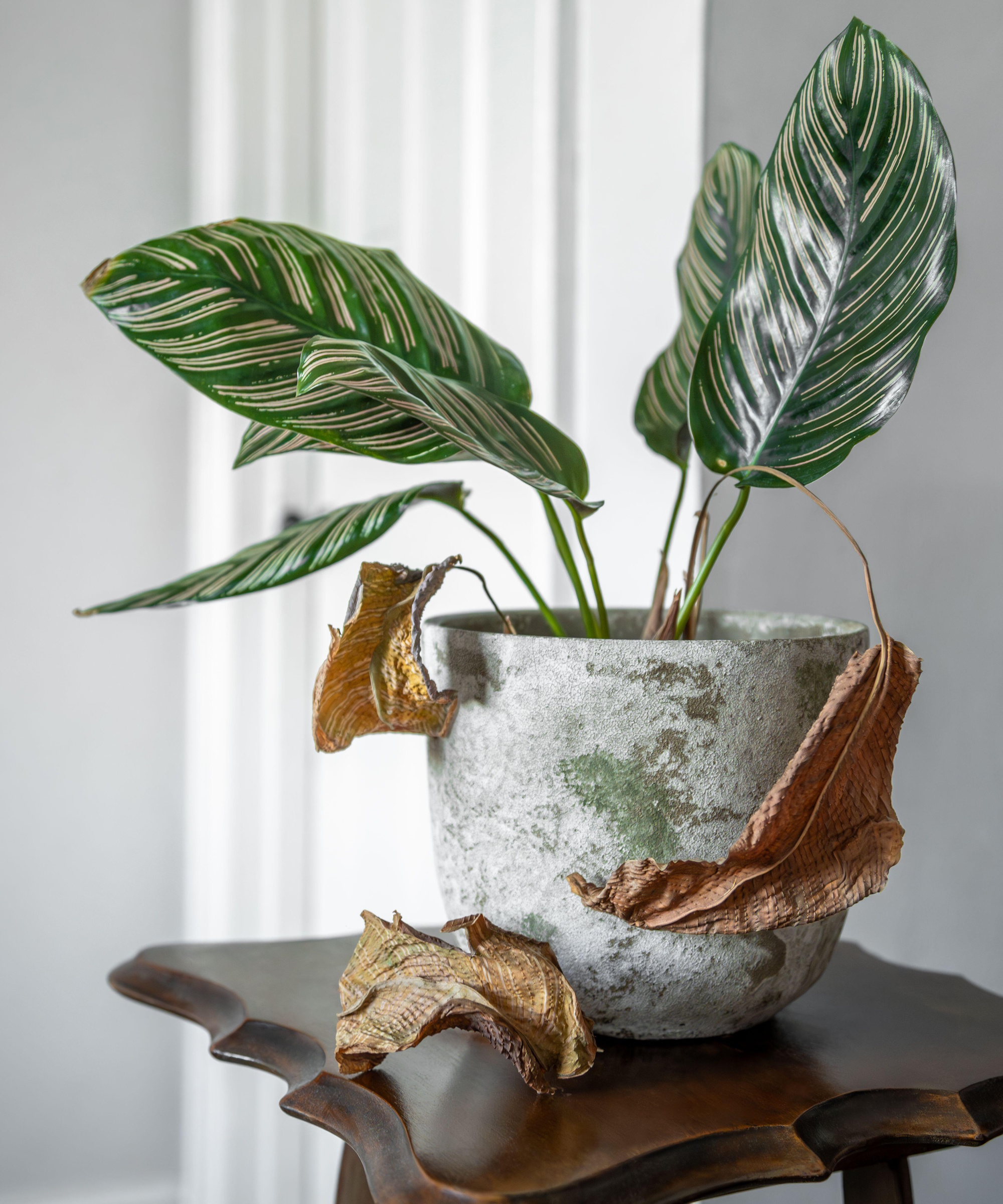
The first thing to do in any case of reviving suffering houseplants is grab your essential pruning tools (like these pruning shears from Amazon) to cut away damaged foliage.
'Pruning crisping or browned foliage can help revive a struggling calathea because damaged leaves will not revert back to their original state, and leaving them attached might only take up more energy from the plant,' explains houseplant expert Melvin Cubian from PlantIn.
Design expertise in your inbox – from inspiring decorating ideas and beautiful celebrity homes to practical gardening advice and shopping round-ups.
When doing this, make clean cuts at the base of damaged leaf stems. Although, Melvin notes there are some cases when you shouldn't do this:
'If you have only a few leaves left and if the browning is limited only to the edges, it would be best to leave them until new leaves emerge,' he says.
You likewise should follow the one third pruning rule, not removing more than this so you don't shock the plant and stunt growth.
Once you have finished pruning, make sure to clean gardening tools to prevent the spread of potential pests and diseases.

Melvin is a certified gardening and plant care expert at PlantIn, which provides a personalized experience for anyone interested in planting and gardening. He is also currently studying for his masters degree in Plant Health.
2. Repot your calathea if necessary
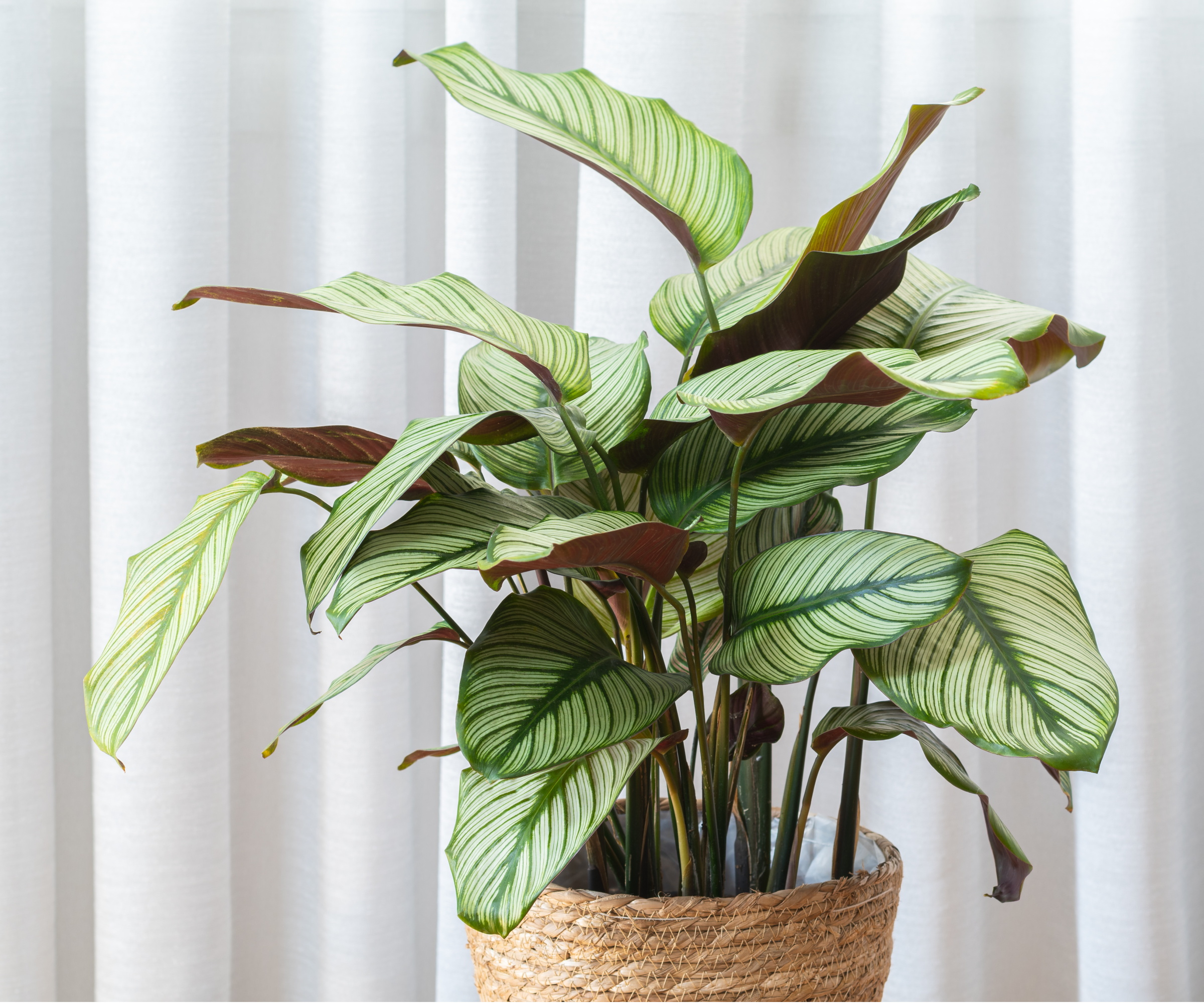
Another reason a calathea may be struggling is that it has become pot-bound and needs more room for growth.
There are some houseplants that like being pot-bound, but calatheas will stop growing when planted in a too-small pot and might even start turning yellow.
For this reason, you can help revive a dying calathea by giving it a bigger home. You should choose a pot around two inches wider than its current pot, and it's best to use one with drainage holes to help manage moisture levels.
This ceramic indoor planter from Amazon is a good choice.
This is also a good opportunity to replenish the essential plant nutrients your calathea has access to:
'I suggest refreshing its soil every season, at least once a year, using a friable medium. You can use a proportionate mix of compost, coco peat, perlite, and regular soil. This will provide better conditions for growth as this is a better root environment in terms of water and nutrient delivery,' Melvin says.
3. Move your calathea somewhere brighter
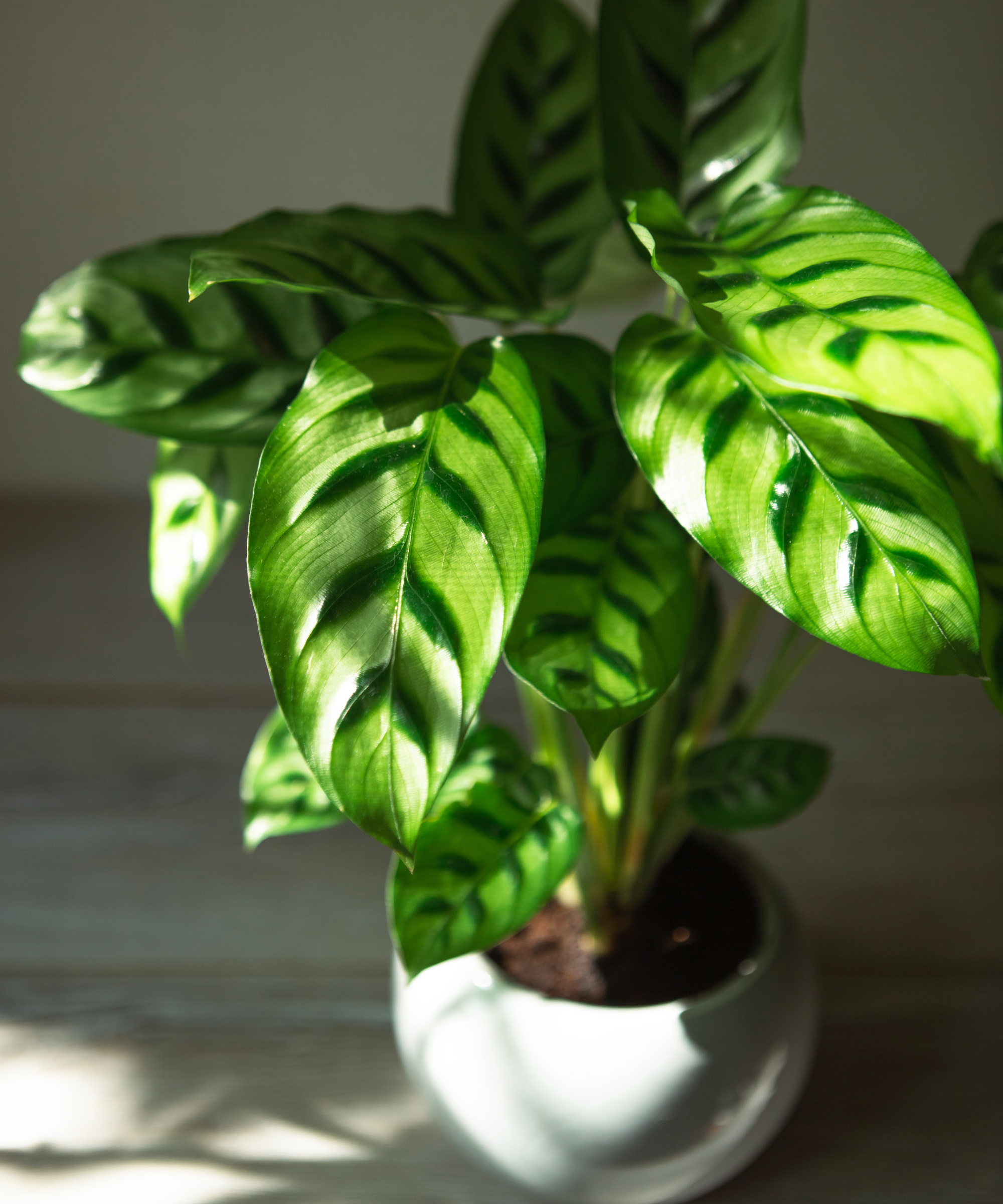
Often, crisping calathea leaves are a result of leaf scorch. In their native habitat of South American rainforests, calatheas grow in dappled light beneath a canopy of trees. This leaves their foliage relatively sensitive to direct sun and prolonged exposure can make them go brown, curl, and drop off.
'It's crucial to strike a balance between direct and shaded spots,' says Melvin. 'Calatheas must receive bright, indirect light, so aim for an east-facing window, or filter light with see-through curtains (from Wayfair) if placed near spots with direct sun rays,' he suggests.
At the same time, calatheas aren't indoor low light plants and you may even spot a calathea drooping if it's growing in a shady spot of your home.
'If more than 50% of the exposure to light is obstructed, I move these plants to a brighter spot,' says Anup Mutalik, founder of House Plants Nook.
If your calathea is struggling during the winter period from darker days, you might find using grow lights for houseplants helps give it a boost. This grow light from Amazon can be adjusted to the height of your plants.

Anup is founder of HouseplantsNook.com, a Brooklyn-based community home. He specializes in indoor plant care, low-light gardening, and integrating plants into home wellness and décor. Anup is passionate about making plant care accessible, stylish, and sustainable for everyone.
4. Maintain consistent moisture levels
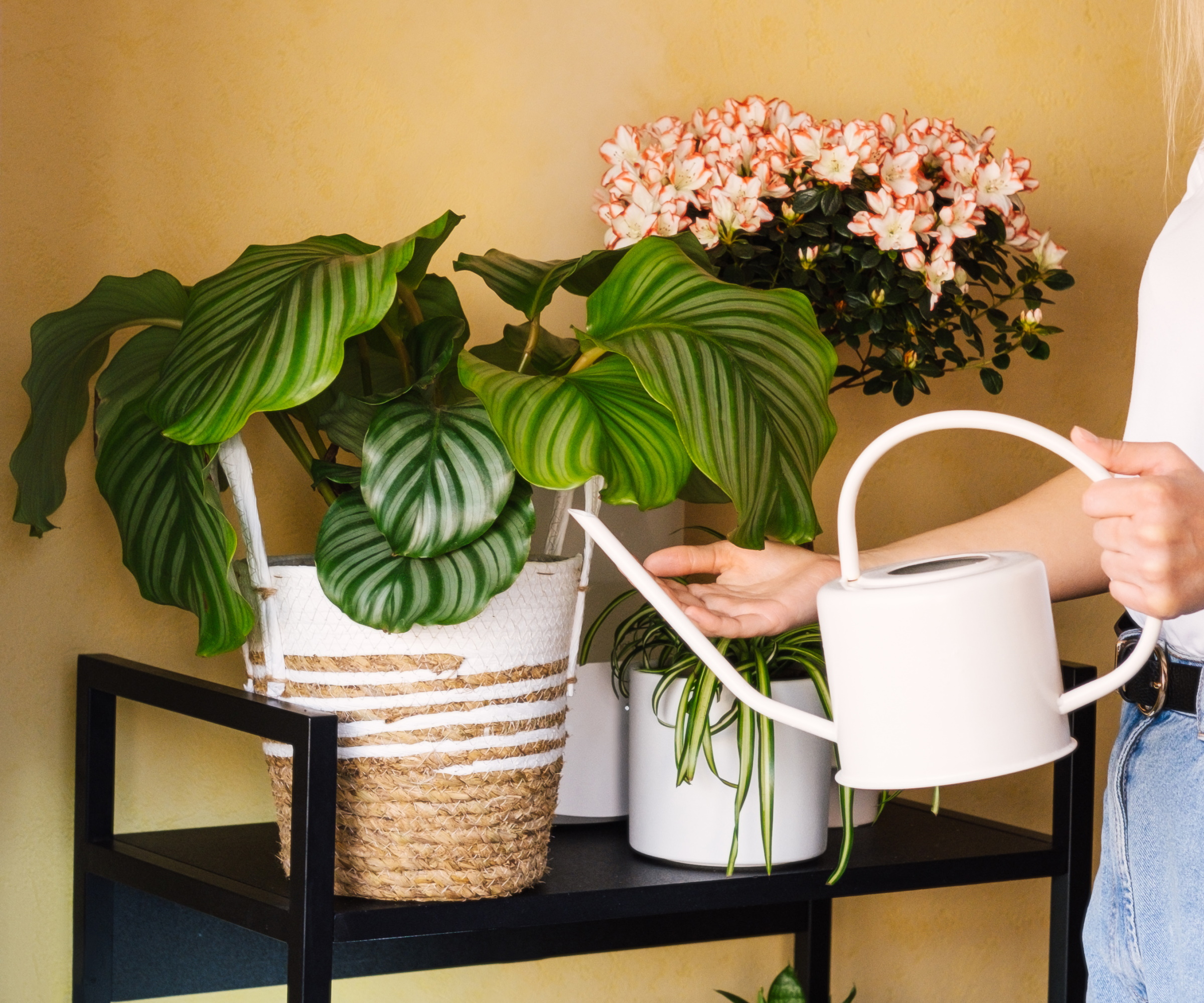
This is something all calathea owners get wrong at some point or another. Watering a calathea too much or too little is easy to do, due their fussy nature, and can lead to their death.
'Calatheas are quite particular with on-time, proper watering, so it’s important to strike a careful balance. Always allow the top layer of soil, around an inch to dry out slightly before watering again. However, never allow it to completely dry because this can result in crisping leaves,' Melvin says.
If your calathea is struggling from being overwatered, allow it to dry sufficiently before watering again.
It's worth noting it may also be too late to revive a dying calathea that has been overwatered, so it's essential check whether it has any healthy roots left for new growth.
If you find it has suffered from houseplant root rot, prune houseplant roots that are damaged and give your calathea fresh houseplant potting mix (from Amazon).
On the other hand, if your calathea is dehydrated, give it a deep watering. 'Water thoroughly until excess drains out the holes, then empty any remaining water from the bottom platter to prevent stagnation,' Melvin says.
Going forward, try using this soil moisture meter from Amazon to identify when your calathea has dried out sufficiently for watering again.
5. Increase humidity levels
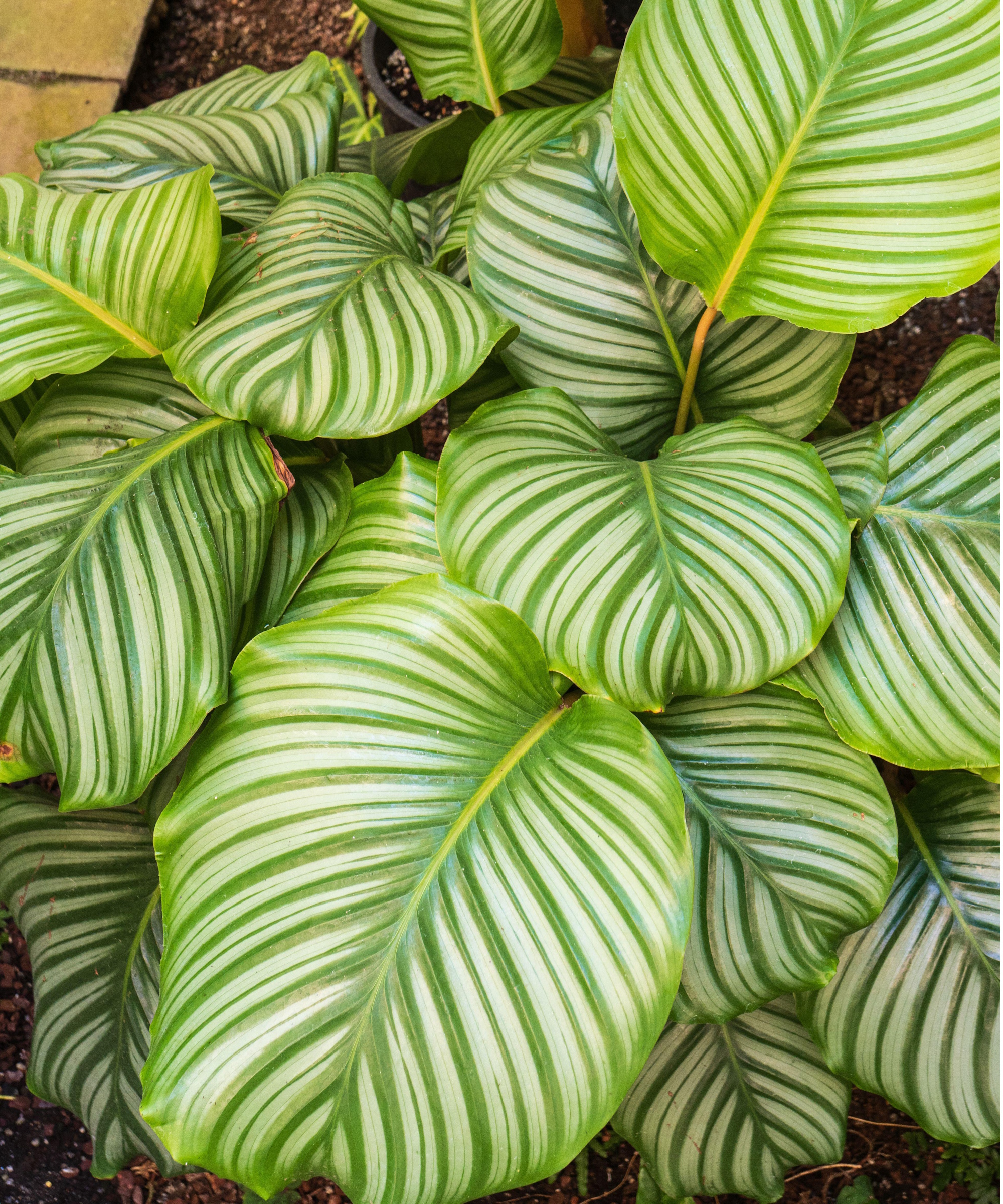
As tropical indoor plants, calatheas also thrive best in higher humidity levels – between 50-70%. A lack of humidity can bring curling calathea leaves, drooping, and crisping.
To resolve this issue, it's as simple as increasing humidity for indoor plants, such as with this humidifier from Amazon or a pebble tray for plants.
The problem also could be that your calathea is in the wrong spot of your home. 'Situating your calathea as a bathroom plant with higher humidity and lighting that is bright enough can make a dramatic difference,' Melvin notes.
Higher humidity may perk up calathea leaves again, but any dehydrated, brown leaves won't become healthy again, so it's best to remove them.
FAQs
Will fertilizer help revive my calathea?
Fertilizer can help a struggling calathea by providing a boost of essential nutrients to bring new growth. In particular, a balanced houseplant fertilizer (from Amazon) is beneficial to these plants. However, to avoid fertilizing mistakes, you must only feed your calathea during spring and summer, at the recommended frequency of your chosen product. Likewise, if your calathea is particularly weak and has few leaves left, take care not to overfertilize the plant. This could shock the plant, burn the roots, and cause further damage.
Adjusting the growing environment of my calathea in the above ways allowed it to return to good health and it hasn't had another problem since. Once your calathea is healthy again, it's worth trying to propagate your calathea. This will multiply your plant, essentially giving you a 'back-up' so you don't lose it from your collection.

Tenielle is a Gardens Content Editor at Homes & Gardens. She holds a qualification in MA Magazine Journalism and has over six years of journalistic experience. Before coming to Homes & Gardens, Tenielle was in the editorial department at the Royal Horticultural Society and worked on The Garden magazine. As our in-house houseplant expert, Tenielle writes on a range of solutions to houseplant problems, as well as other 'how to' guides, inspiring garden projects, and the latest gardening news. When she isn't writing, Tenielle can be found propagating her ever-growing collection of indoor plants, helping others overcome common houseplant pests and diseases, volunteering at a local gardening club, and attending gardening workshops, like a composting masterclass.